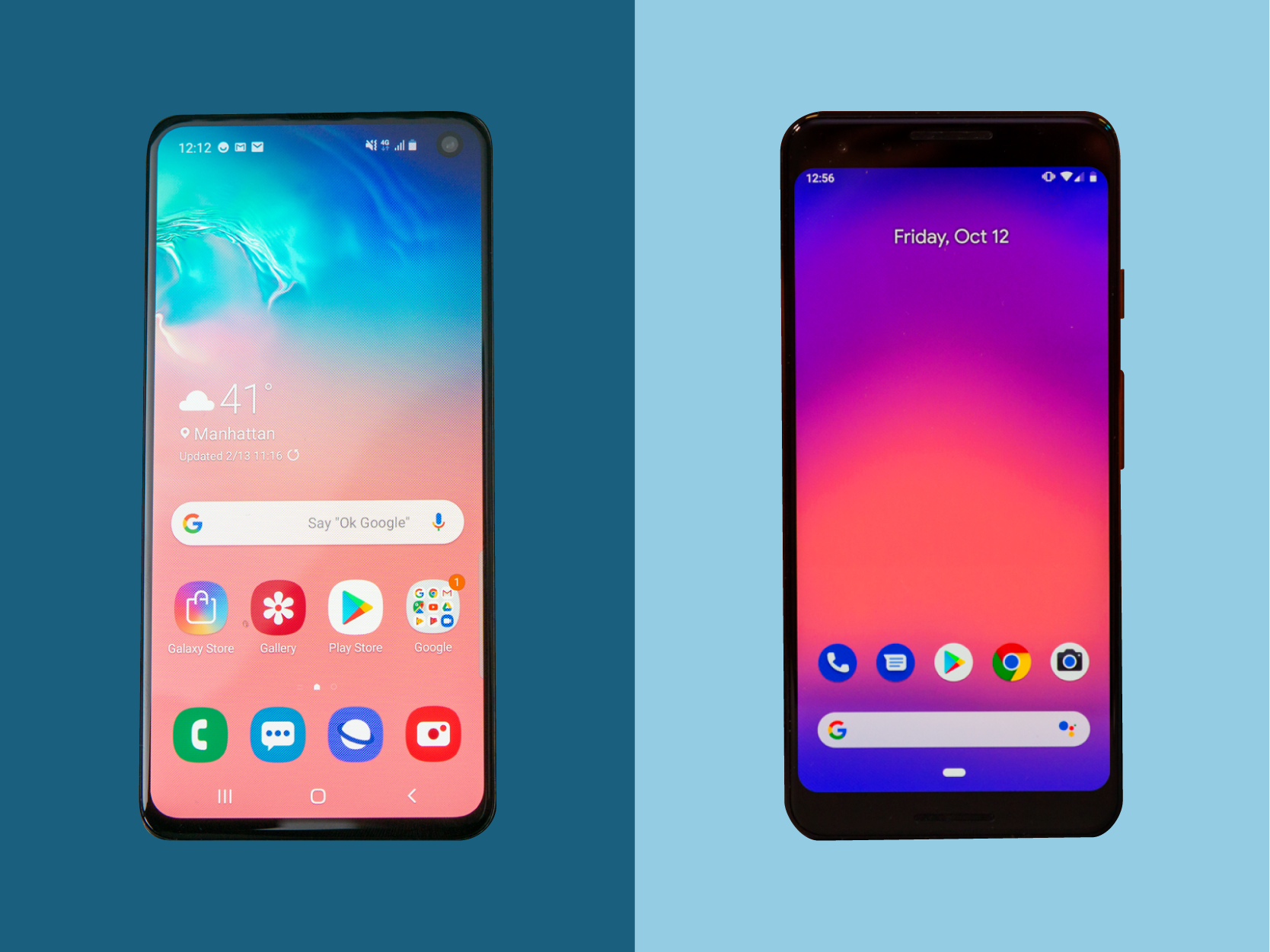- Samsung recently unveiled a new line of smartphones: the Galaxy S10e, Galaxy S10, Galaxy S10 Plus, and the Galaxy S10 5G.
- The Galaxy S10 is an upgraded, redesigned version of its predecessor, the Galaxy 9, with some new features – including an on-screen fingerprint sensor, four cameras, and reverse power share.
- The S10, which launches on March 8th, is drawing comparisons to the Google Pixel 3, the phone released in October which got positive reviews for its camera quality and sleek display.
- Here’s how the Samsung Galaxy S10 and Google Pixel 3 stack up against each other.
Samsung’s new lineup of Galaxy S10 phones have given Android users a lot more to think about.
The Galaxy S10 phones, which start rolling out on March 8th, come with a whole slew of top-of-the-line features that put it in the running for anyone who’s considering buying a new Android device. The Galaxy S10 comes with four cameras, an in-display fingerprint unlock, reverse wireless charging, and even a traditional headphone jack.
But before you go out and purchase the newest Galaxy S phone, you may want to consider whether it’s the best phone to suit your smartphone needs. Google released its Pixel 3 and Pixel 3 XL in October, and the device has been praised for its top-of-the-line camera, which includes two camera lenses for selfies.
Here’s how the Samsung Galaxy S10 and the Google Pixel 3 stack up:
Let's start with the size of the device. The Pixel 3 is 2.7 wide inches by 5.7 inches tall, with a screen that measures 5.5 inches diagonally.

The Galaxy S10 is a slightly bigger device — it measures 2.8 inches wide by 5.9 inches tall. However, the S10 has an edge-to-edge display and thinner bezels (the space between the screen and the frame) at the top and bottom, giving the phone a larger screen at 6.1 inches measured diagonally.

The Pixel 3 has a fingerprint sensor to unlock your phone that's located on the back — the same place as on older Samsung Galaxy S phones This design makes it easy to unlock your phone without having to adjust your natural hold.

On the Galaxy S10, the fingerprint sensor is located at the bottom of the screen, like on older iPhones. But unlike those older devices, the Galaxy S10 hides the fingerprint sensor under the screen, so Samsung hasn't sacrificed any screen space.

The Pixel is regarded as having one of the best cameras of any smartphone out there. In addition to the one fantastic rear camera, the Pixel 3 has two front-facing lenses, including a wide-angle lens that can take ultra-wide selfies.

Check out Business Insider's review of the Pixel 3 and what an ultra-wide selfie on the phone looks like.
The S10 has four cameras, although only one is front-facing for selfies — though the larger S10+ has a second selfie camera. The triple-lens system on the back includes a regular 12-megapixel camera, an ultra-wide view, and a 2x optical zoom camera for all your photography needs.

One of the biggest differences comes when you look at the bottom of the phone. The Pixel 3 has a USB-C port that's become typical on newer phones, which is mainly meant for charging and plugging in USB-C wired headphones.

The Pixel 3 comes in the box with a pair of traditional plug-in, wired earbuds with a USB-C plug.

The Galaxy S10 has a standard headphone jack, which is rare for newer smartphones. This means you can use your old headphones, if you want.

Read more: The Samsung Galaxy S10 is one of the few major smartphones you can still buy with a headphone jack
If you preorder before March 7th, the S10 comes with a pair of Samsung's new Galaxy Buds. There's no telling the sound quality yet, but the Galaxy Buds come with a charging case, and in three colors — white, black, and yellow. They might even be more aesthetically pleasing than Apple's famed AirPods.

Read more: Samsung has introduced new $130 earbuds to take on Apple's popular AirPods - here's how they compare
When it comes to charging, both smartphones allow for wireless charging. The Pixel 3 has a 2915 mAh battery.

However, the S10 kills it when it comes to charging capabilities and battery life. The S10 has a larger 3400 mAh battery. It also supports reverse wireless charging, a feature featured on few previous phones. Basically, you can use a Galaxy S10 to wirelessly charge supported devices, including other phones.

When it comes to choosing your color, the Pixel 3 comes in three: pink ("Not Pink"), and black ("Just Black"), white ("Clearly White").

Meanwhile, the Galaxy S10 is available in the US in four colors: black ("Prism Black), white ("Prism White"), blue ("Prism Blue"), and a coral-pink color ("Flamingo Pink"). There are two more additional colors only available to customers outside of the US: green and yellow.

The Pixel 3 starts at $800 for the 64 GB model, and goes up to $900 for 128 GB.

The S10 is a bit pricier, at $900, but that comes with 128 GB of storage included.


